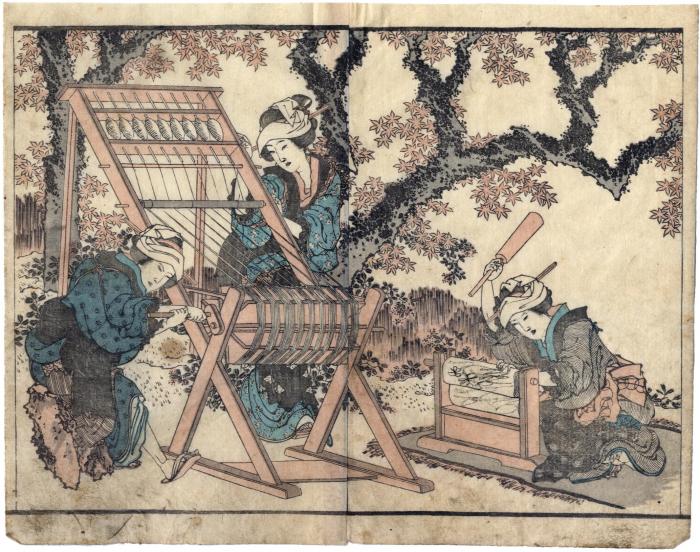Katsushika Hokusai (葛飾北斎) (artist 1760 – 1849)
Fulling and a threading loom - two page illustration from the Hokusai gafu or 'Hokusai Picture Book'
1849
10.5 in x 8.25 in (Overall dimensions) Japanese woodblock print
Art Research Center
Bayerische Staats Bibliothek - left sheet
Bayerische Staats Bibliothek - right sheet
National Museum of Asian Art - the Pulverer Collection
Minneapolis Institute of Art The Hokusai gafu is 北斎画譜. Links to the sheet at the Bayerische Staats Bibliothek clearly show a different edition of this book.
Originally published by Eirakuya Tōshirō in Nagoya in 1849, the same year Hokusai died. This example in the Lyon Collection appears to be from a later edition.
****
On page 5 of Amy C. Riggs' September 2017 doctoral dissertation from Princeton she wrote about fulling in ancient China. She noted: "By the Tang dynasty, fulling cloth has become a common poetic trope. As poets freely adopted the sight and sound of fulling cloth, it came to signify a soldier's longing for home, wistfulness for those who were away, the advent of autumn, and pending departure of dear ones."
On page 6 Riggs noted that there is a tomb from the time of the Jurchen Jin dynasty (1115-1234) showing a scene of fulling. This would imply an other-worldly importance to this act.
Referencing the work of a modern Chinese scholar, Riggs added on page 18 that during the Tang dynasty, "Instead, they start to invoke the sight and sound of fulling cloth as symbols of parting of friends, longing for home, missing families and friends, and the arrival of autumn."
picture book (ehon - 絵本) (genre)
